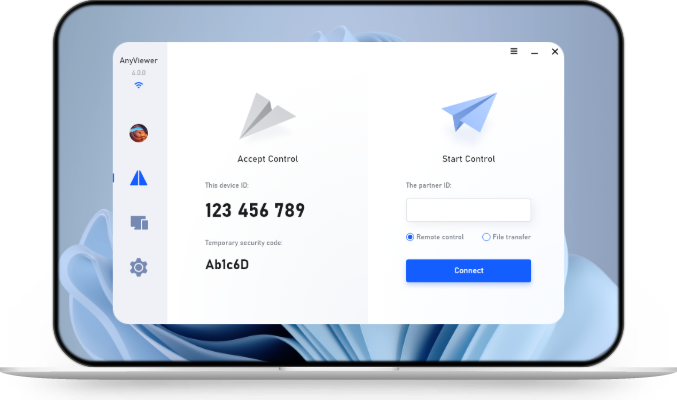[Top 3 Ways] How to Access Home Network Remotely
How can you access home network remotely? Delve into this guide for an in-depth exploration of the 3 most effective methods, accompanied by step-by-step tutorials.
Can I access my home Internet remotely?
Yes, you can access your home internet remotely. The rise of remote work, coupled with the need for constant connectivity, has led to a surge in the demand for remote access to home networks. Remote access to your home internet allows you to connect to your home network from a location outside your home, using the internet as a bridge.
Benefits of accessing home network remotely
The advantages of remote access are numerous. From increased productivity to the convenience of accessing files from anywhere, remote access offers a host of benefits for both individuals and businesses. Here are some examples.
Increased productivity
Remote access enables you to work from any location, breaking free from the confines of a traditional office space. Whether you're at a coffee shop or halfway across the world, you can seamlessly connect to your home network and get work done.
With the ability to access your home network remotely, you have the flexibility to create your schedule. No longer bound by the 9-to-5 routine, you can choose when and where to be most productive.
Convenience at your fingertips
Need a crucial document while you're away from home? Remote access allows you to retrieve files and documents stored on your home network, making it a valuable tool for students, professionals, and anyone who needs information on the go.
Time & cost savings
Working or accessing resources remotely eliminates the need for daily commutes. This not only saves time but also reduces fuel costs and contributes to a more sustainable lifestyle.
Remote access allows you to utilize the resources available on your home network without the need for expensive hardware upgrades. Over time, this has the potential to yield substantial savings in costs.
How to access home network remotely [3 ways]
Various methods present distinct advantages and compromises. You might discover that a singular approach suffices or that each method serves specific remote access requirements differently. A brief overview of the 3 methods is followed by a more detailed examination of each for a comprehensive understanding.
- Use remote desktop software
- Set up a local VPN server
- Configure a Dynamic DNS (DDNS) host
Way 1. Use remote desktop software
For those aiming to seamlessly access their home desktop from a remote location, the ideal solution lies in remote desktop software. This software operates precisely as the name suggests: by deploying a remote desktop server on your home computer and subsequently installing a remote desktop client on the device you intend to use outside your home environment.
AnyViewer is one of the best free remote desktop software that simplifies the process of remote desktop access, allowing users to effortlessly connect to and control a computer or device from anywhere. This method is ideal for tasks that require direct control over a specific device, such as troubleshooting issues, managing software, or accessing specialized applications.
Here's how to access home network remotely using AnyViewer:
Step 1. First, install AnyViewer on your home computer.
Step 2. If you don't have an AnyViewer account, create one.
Step 3. Install AnyViewer on your local device. Log in with your account.
Step 4. Find your home computer on your AnyViewer list. Click "One-click control" to connect remotely.
Step 5. Once connected, use the remote home desktop just like you're right there at the computer.
- ★Tips:
- For businesses with elevated requirements, the option to upgrade to a Professional or Enterprise plan is available. This upgrade provides you with the capability to transfer files, monitor multiple devices simultaneously, group management, mass deployment, and more.
Way 2. Set up a local VPN server
Virtual Private Networks, commonly known as VPNs, stand out as a robust and secure solution for accessing your home network remotely. By encrypting your internet connection, VPNs for remote desktops ensure that your data remains confidential and protected from prying eyes. Connecting to your home network through a VPN establishes a secure tunnel, allowing you to access files, devices, and services as if you were physically present at home.
Let’s take NordVPN as an example to see how to access home network remotely via VPN:
Step 1. Download and install a VPN for Windows PC.
Step 2. Sign up for an account with NordVPN. This will involve providing an email address and creating a strong password.
Step 3. Open up your preferred browser.
Step 4. Type your router's internal IP address (LAN) into the search bar. Most routers use either 192.168.0.1 or 192.168.1.1. If these don't work, follow the instructions below to find your router's IP address.
Step 5. Access the router by entering the default username and password. If you haven't modified these credentials, both fields are likely set to "admin."
Step 6. Navigate to Settings (or Advanced Settings) and locate the VPN Service section. Activate the VPN Service to enable it.
Step 7. Ensure that clients utilizing the VPN connection have permission to access all websites on the internet as well as the home network.
Step 8. Confirm these settings by clicking “Apply”.
Step 9. After setting up your router, NordVPN will provide you with connection credentials. This typically includes a server address, a username, and a password. Keep these credentials secure, as they will be used to establish the VPN connection.
Step 10. Launch the VPN client on your home computer and log in with the credentials provided by NordVPN. Choose a server location (it's recommended to select a server close to your home for better performance) and initiate the connection.
Step 11. Once the VPN connection is established, your remote device will be virtually connected to your home network. You can now access devices, files, and services on your home network as if you were physically present.
Way 3. Configure a Dynamic DNS (DDNS) host
For those facing the challenge of dynamic IP addresses, Dynamic Domain Name System (DDNS) provides an elegant solution. DDNS assigns a hostname to your home network, updating it dynamically as your IP address changes. This means you can access your home network using a consistent domain name, even if your internet service provider periodically assigns a new IP address.
DDNS is a reliable choice for individuals who want a hassle-free way to connect to their home network remotely without constantly adjusting settings.
One reputable DDNS (Dynamic Domain Name System) service provider is No-IP. It offers a straightforward setup process and a free tier for basic use. Here are the steps to configure No-IP for accessing your home network remotely:
Step 1. Visit the No-IP website (https://www.noip.com/) and sign up for a free account. Choose a username, enter your email, and create a secure password.
Step 2. After creating your account, log in to the No-IP dashboard. Choose "Dynamic DNS" from the navigation menu, then click on "Add a Hostname."
Step 3. Choose a hostname for your home network (e.g., yourhomenetwork.ddns.net) and select the domain provided by No-IP.
Step 4. Access your home router's settings through a web browser. The router's IP address is usually something like 192.168.0.1 or 192.168.1.1. Consult your router's manual or documentation for the correct address.
Step 5. Access your router by logging in with the administrator credentials.
Step 6. Locate the DDNS settings section. This can usually be found under the "Dynamic DNS," "DDNS," or "Internet" tab, depending on your router model.
Step 7. Choose "No-IP" as the DDNS provider and enter the hostname, username, and password from your No-IP account.
Step 8. Save the changes and test the DDNS setup by accessing the hostname (yourhomenetwork.ddns.net) in a web browser. It should redirect you to your home network.
Step 10. Ensure that your router's firewall allows incoming connections to the services you want to access remotely (e.g., Remote Desktop, file sharing).
The bottom line
In conclusion, accessing home network remotely offers unparalleled benefits such as increased productivity, convenience, and cost savings. This guide has detailed three effective methods—using remote desktop software like AnyViewer, setting up a local VPN server, and configuring a Dynamic DNS host. Choose the approach that aligns with your needs, providing the flexibility to seamlessly connect and manage your home network from anywhere in the world.

